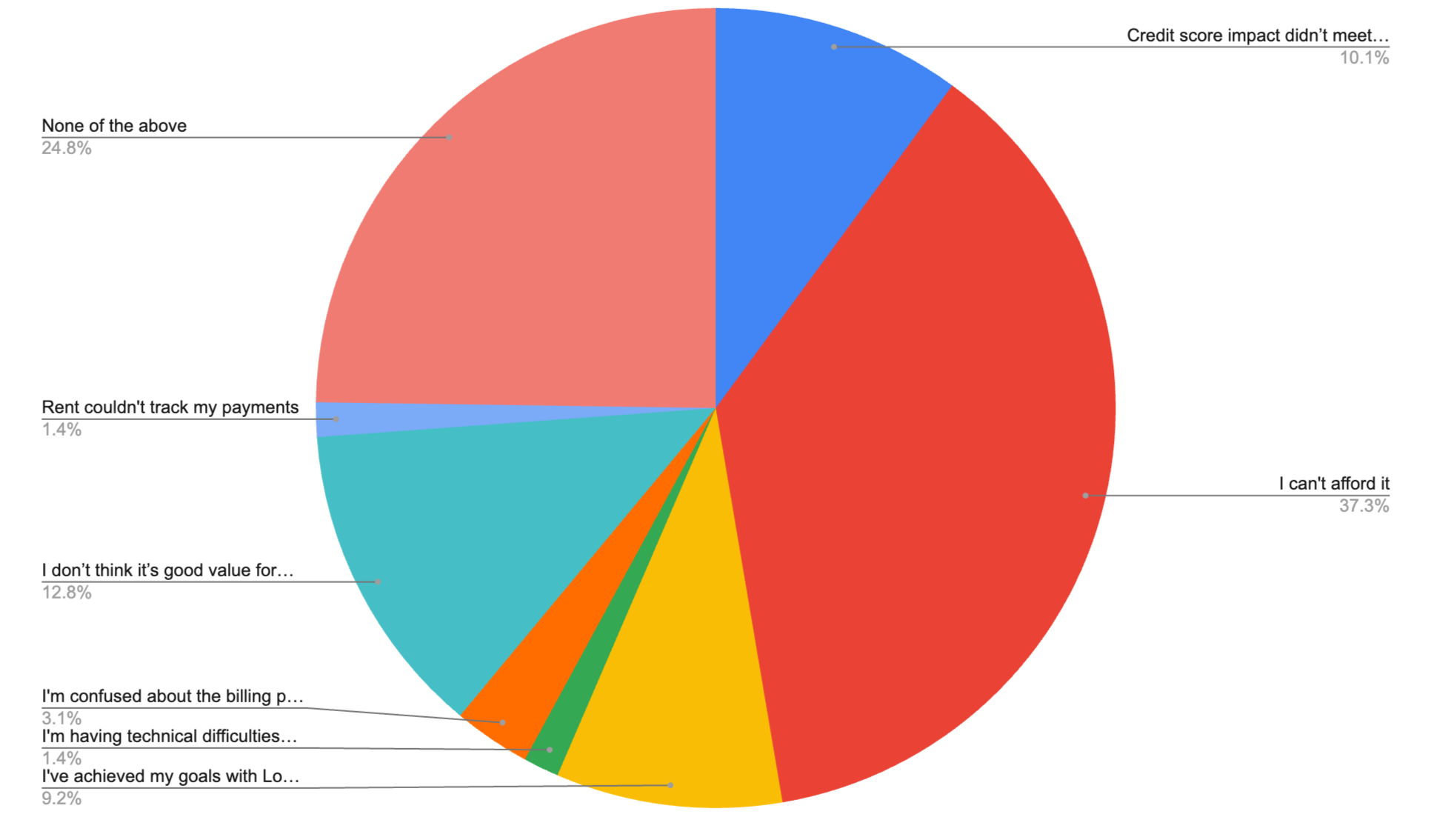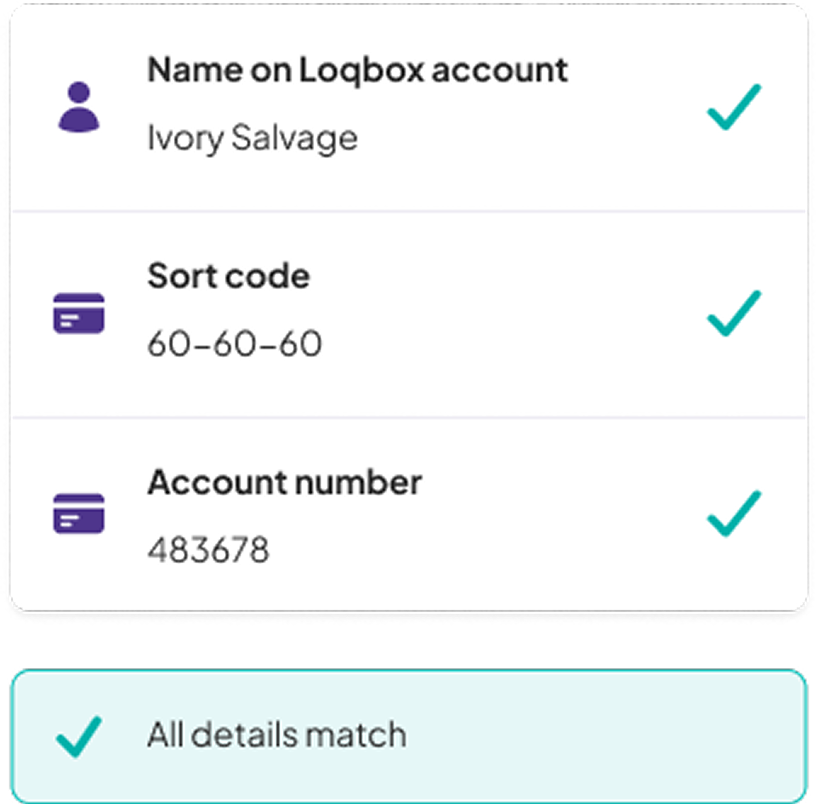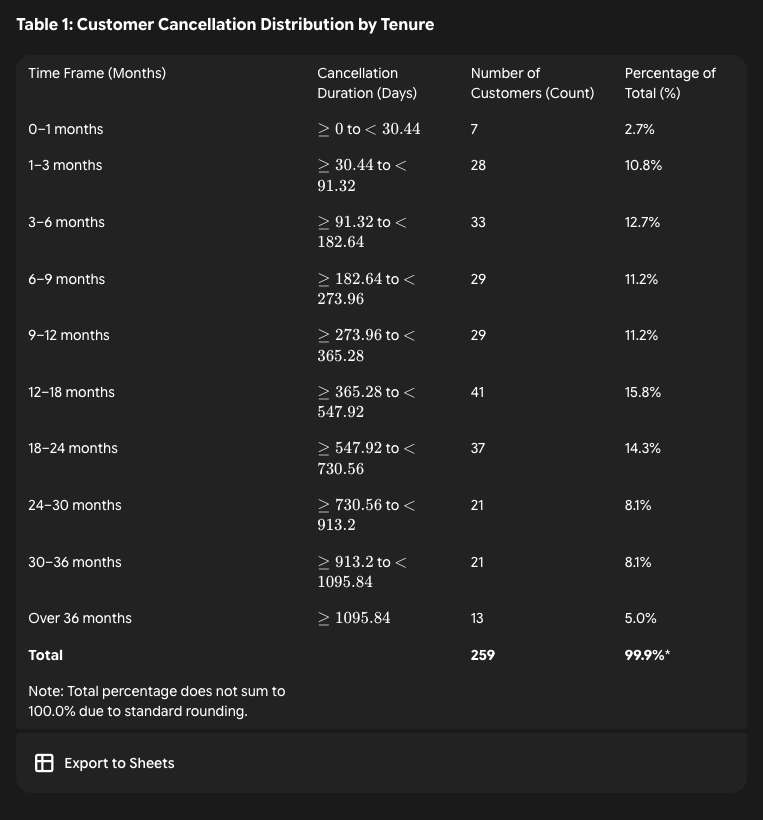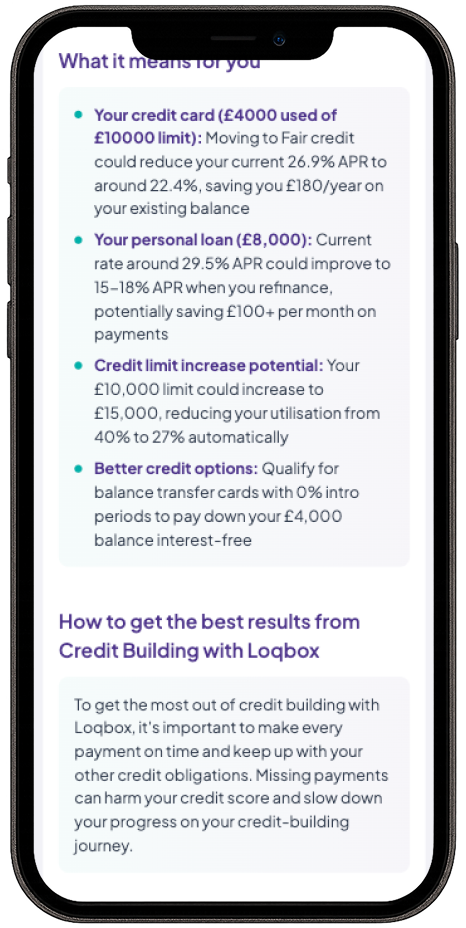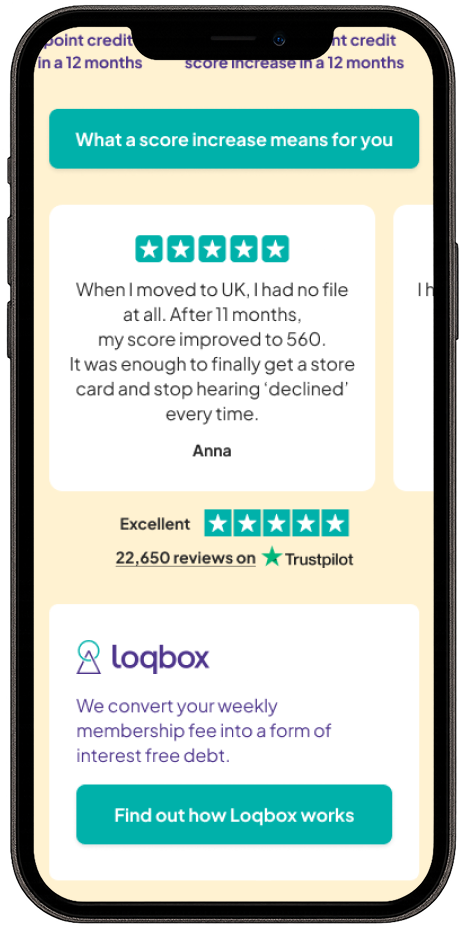Loqbox
Building customer confidence with personalised credit experiences
Overview
Loqbox helps users build credit and save money by converting their savings into a form of repayable credit. Each monthly saving contribution is reported to credit reference agencies as an on time payment helping users build their credit history while building savings. Despite Loqbox’s strong value proposition, churn was high. A significant number of users were cancelling.
Scope
Research, testing, design and data analysis
Team
Sole designer
Duration
4 weeks
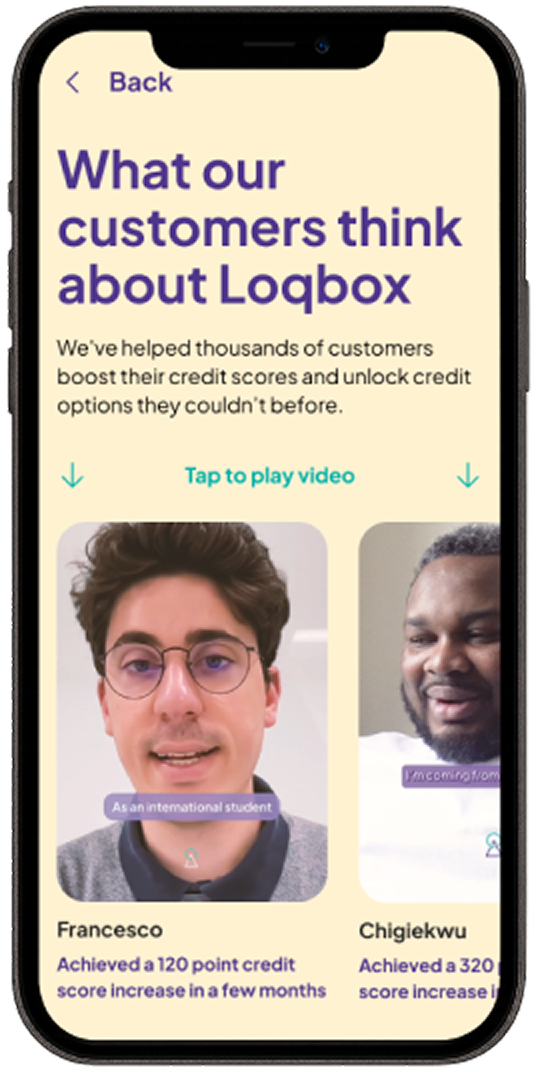
Outcomes
- Achieved an average tester confidence score of 8.1/10
- 5 of 6 testers said they would sign up to Loqbox
- Insights informed product and marketing strategy
Objective
Reduce customer cancellation rate and improve retention.
Understanding why customers leave
I began by analysing cancellation data and exit survey responses. I focused on the third largest segment of users cancelling: those who reported “no improvement” or “negative impact” on their credit score.
Since we were already focusing on affordability and other teams were addressing the other segments, we decided to focus on “no improvement” or “negative impact” which presented an opportunity to help customers achieve better credit score outcomes.
Exit survey response data
Mapping Assumptions
I listed out my assumptions on why customers were reporting no improvement or negative impact to their score to guide discovery, in summary:
- Users may be cancelling too early, before Loqbox has had time to affect their score.
- They might not understand how credit improvement works.
- They may have other credit behaviours (e.g., high utilisation, missed payments) impacting their results.
Access to the data team was limited, and incentive budgets were already allocated elsewhere so I prioritised assumptions that could be validated without access to the data team or direct insight from customers with interviews.
Assumptions on why customers saw no increase in their score
Narrowing the Focus
Given the constraints, I focused on exploring the assumption that “Customers were cancelling too early, before they’ve had time to see results”
I analysed cancellation timing data and found:A large number of users were cancelling within 0–3 months reporting “no score increase”, we knew typically Loqbox starts improving credit scores around 3–4 months. This gave me enough evidence to give me direction.
I decided that this was enough directional evidence to focus my efforts on trying to retain members cancelling between 0-3 months.

Data showing customers time in days from sign up to cancellation
Developing concepts
I explored a range of concepts to challenge my assumptions and identify ways to help customers achieve better credit outcomes. These centred around two main themes:
- Helping users understand what to expect from the process
- Helping users see the credit score they could achieve
After a prioritisation conversation with the Director of Product about what we wanted to test and learn, we decided to focus on the latter. My next step was to test a concept aimed at retaining members who were going through the cancellation flow.
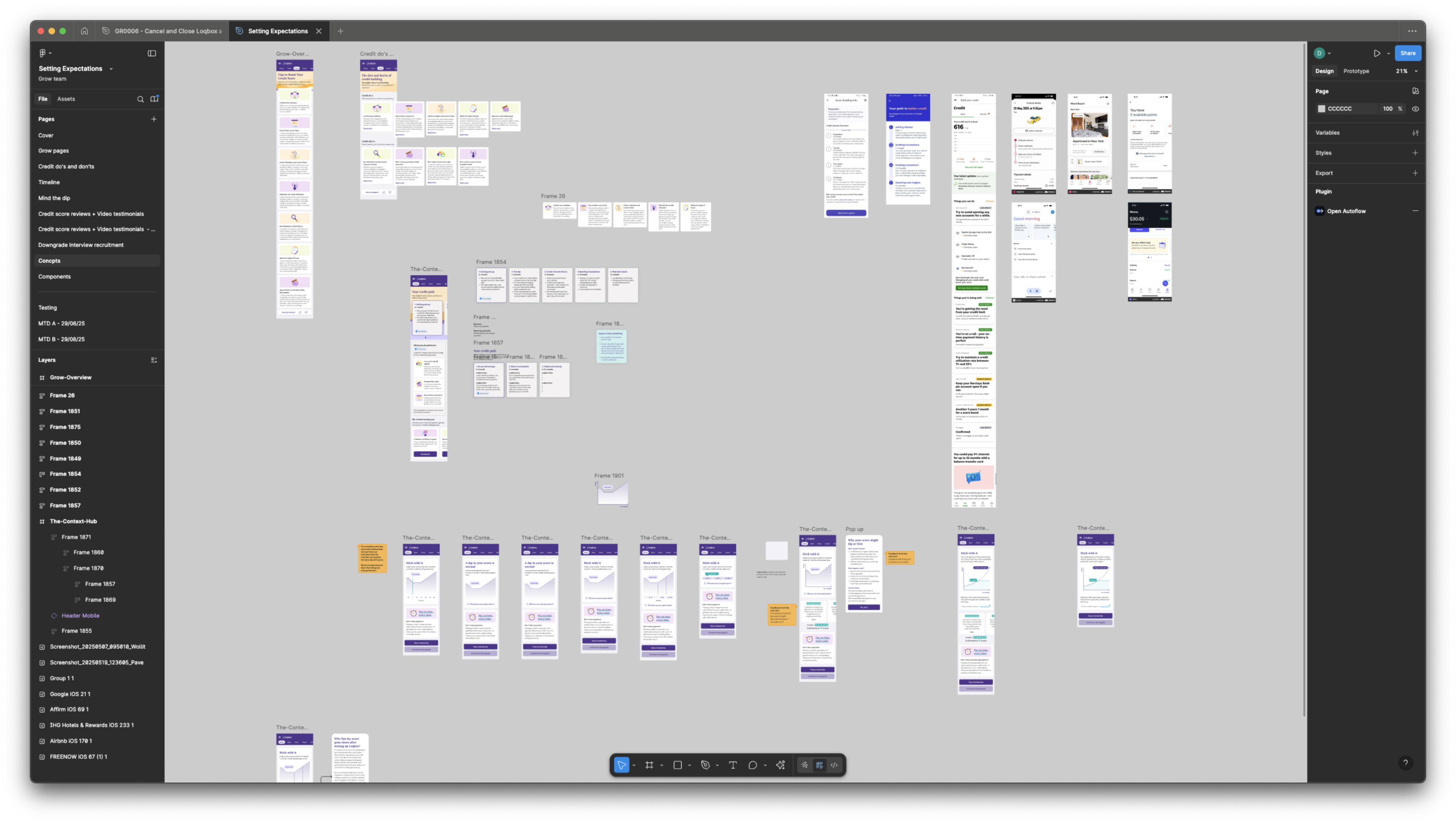
Figma file with different concepts
Projecting potential credit score increases at the point of cancellation
If a user went through the cancellation flow before 3 months, they would be shown a page that showed what their credit score could be after 12 months. I wanted to put the screen into user testing to test the following hypothesis:
IF we show users who want to cancel the credit score increase they could achieve after 12 months, THEN they’ll be more likely to stay because they see the value of continuing.
Would the page convince a user to stay with Loqbox?
View prototype
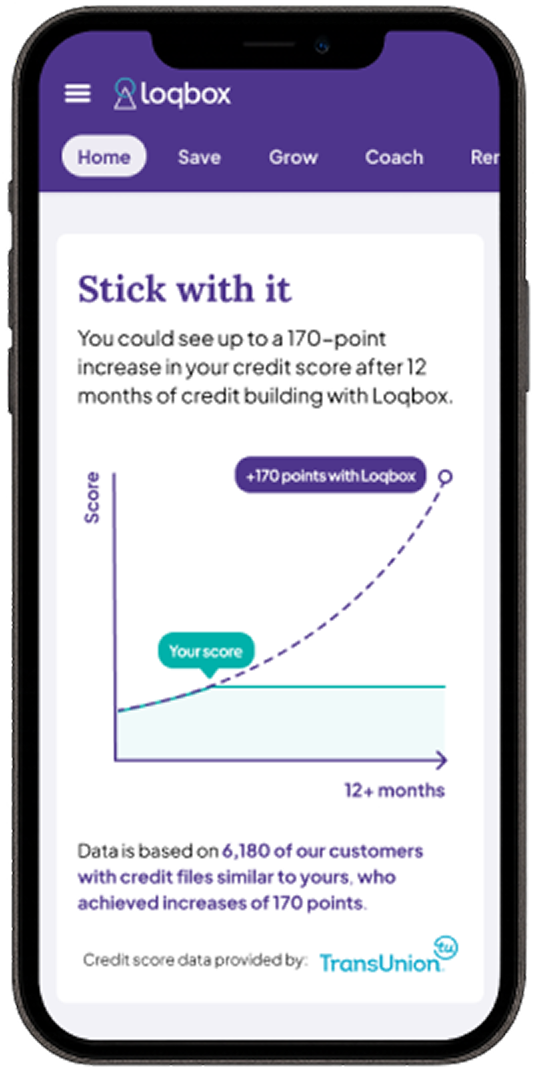
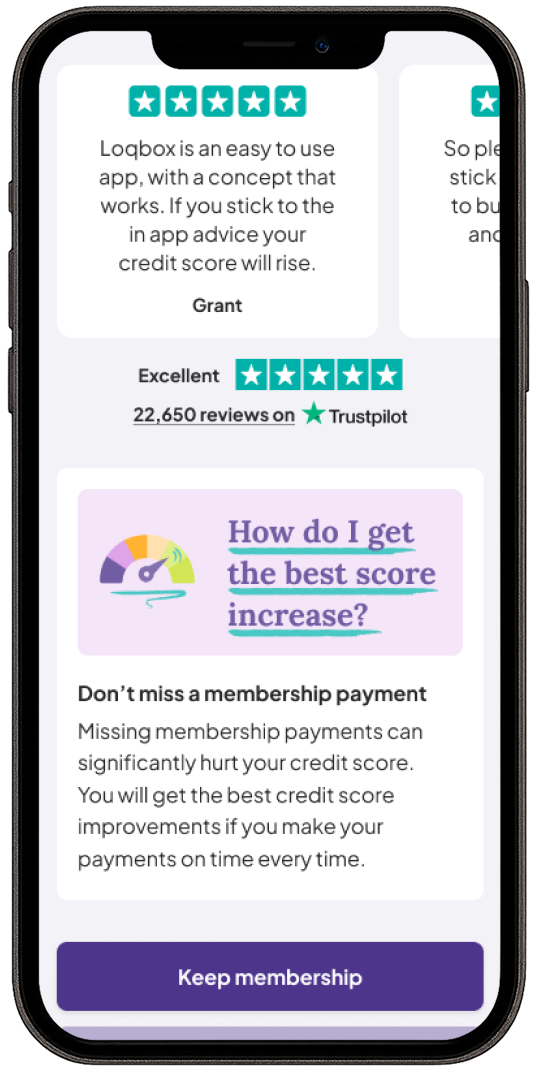
Credit score projection screen in the cancellation flow
User Testing (5 participants, via Userbrain)
Results from test:
- 4/5 wanted to see more reviews or depth in Trustpilot content
- 3/5 wanted to see score increases tied to real customer stories
- 3/5 asked for more personalisation
- 3/5 said the page would convince them to stay
“How does this score increase change my life? I don’t see that here.”"I think that in my head if I'm so determined to do something, there's not really much that can change my mind."
The feedback led me to question my retention effort focus, was I presenting the right information at the wrong time?
Moving up the funnel
If the retention message wasn’t landing at cancellation, could we build confidence earlier in the user journey with personalisation?
Using the insight I gained from the usability test I listed new assumptions in summary:
- Members will see more value if outcomes are personalised to their credit profile.
- Showing how credit improvements translate to real-world benefits (e.g., lower interest rates) increases perceived value.
- Reviews with score improvements or video testimonials from similar users would build trust.
List of new assumptions
Developing new concepts
Using the new assumptions to guide my next round of exploration I moved away from the cancellation experience. Would I achieve the outcome I was looking for outside the cancellation experience? I developed two new concepts to bring into user testing to test my new hypotheses.
Credit score forecasting personalised to their credit score
This experience visualised a customer’s current credit score alongside the potential growth they could achieve over 12 months. It also connected those changes to real world credit outcomes. This experience allowed me to test the following hypotheses:
IF members could understand what credit score increase they could achieve THEN they are more likely to feel confident that Loqbox will improve their credit score
IF members understand how a credit score increase will impact their credit file THEN they are more likely to understand the benefits of using Loqbox
View prototype
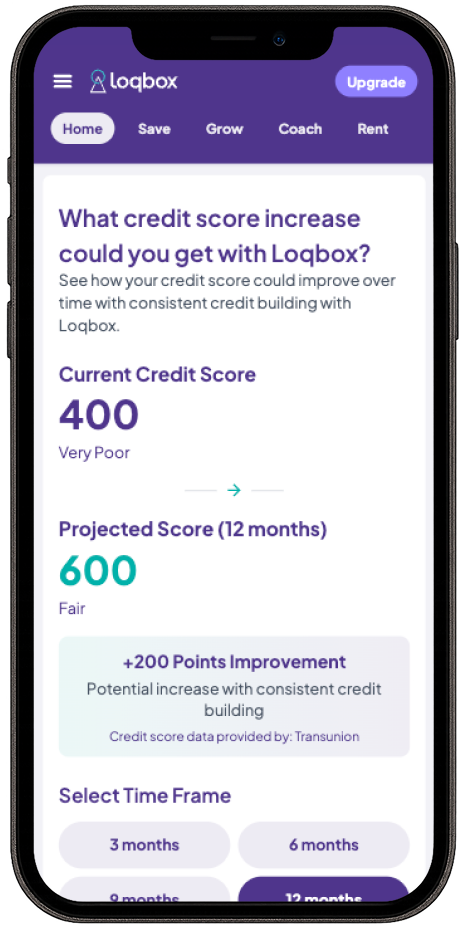
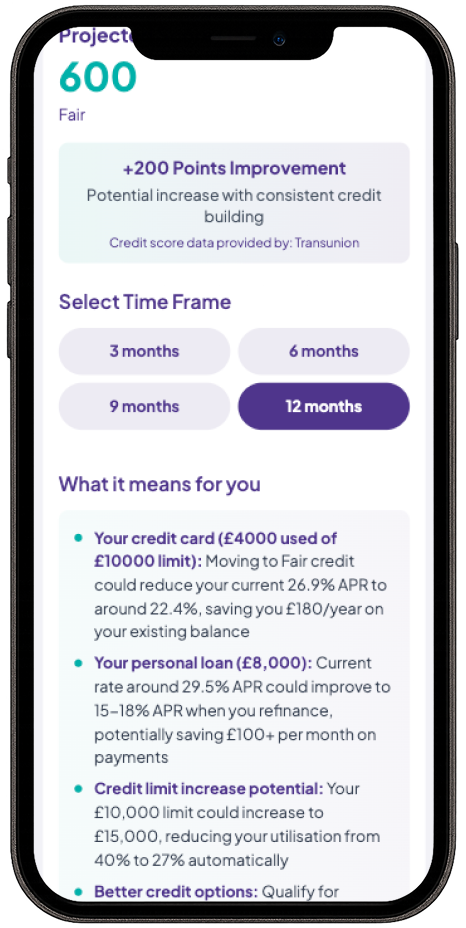
Credit forecasting for the logged in experience
Testing (10 participants via Userbrain)
Results strongly validated both my hypotheses.Average confidence score: 7.8 / 10
Average usefulness score: 8.1 / 10
Testers described the feature as:“motivating” and “helpful for understanding how credit works.”
"I like the fact it actually tells you the value of
improving your credit score... you can see that you can generally save"
Personalised reviews and video testimonials to customer who are new to the UK
I tested a personalised experience designed for a key customer segment customers who were new to the UK and looking to build their credit score.
I used this experience to test the following hypotheses
IF members watch video testimonials that are personalised to their experience THEN they are more likely to have confidence that Loqbox will improve their credit score BECAUSE they have seen it work for people in a similar situation to them.
IF members read reviews that are personalised to their experience THEN they are more likely to have confidence that Loqbox will improve their credit score BECAUSE they have seen it work for people in a similar situation to them.
IF members read reviews showing credit score improvements THEN they are more likely to have confidence that Loqbox will improve their credit score BECAUSE they can see it has worked for other customers.
View prototype
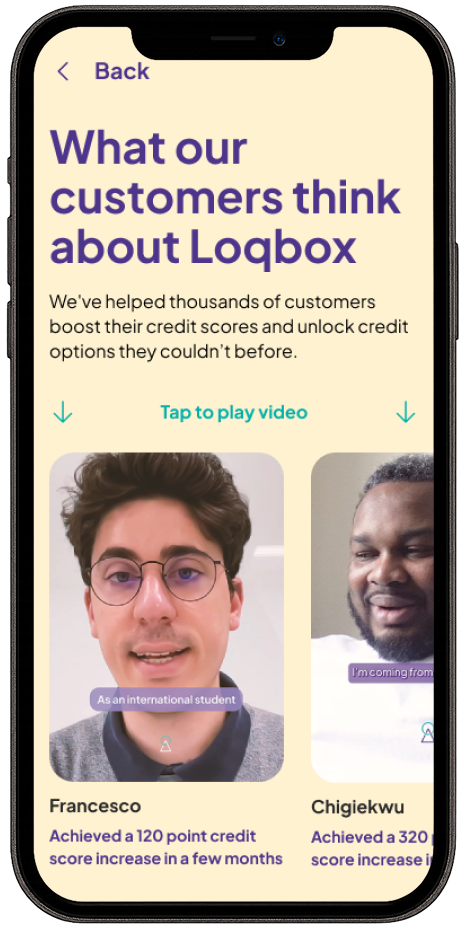

Personalised reviews and video testimonials
Testing (10 participants via Userbrain)
Validated the assumption that personalised testimonials/content builds confidence.
- Average confidence score: 7.6 / 10
- Average usefulness score: 8.4 / 10
Testers reported that personalised stories made them feel like stating “it could work for me.”
Recommendations to the business
Following the strong user testing results, I recommended expanding to validation with real customers, and if successful, moving into A/B testing to measure impact at scale.
Outcomes and impact
Although the solutions remained at concept stage, the results informed future product priorities.
Impact:
- The data team was tasked to explore how we implement a credit simulator using TransUnion credit data.
- Marketing began investigating ways to incorporate real credit score increases into Trustpilot reviews.
- The Product Director initiated conversations around how to implement personalised video testimonials
Reflections and key learnings
This project reminded me that a lack of access to the data team doesn’t mean a lack of insight. Create your own data, and use that to change minds and refocus thinking within a business. Lean experimentation helped me get there, I was able to validate big ideas quickly and cheaply.
Next steps
The positive results meant that other teams would be exploring how feasible it would be to implement the solutions. While this was happening I would start testing the concepts with Loqbox customers.
